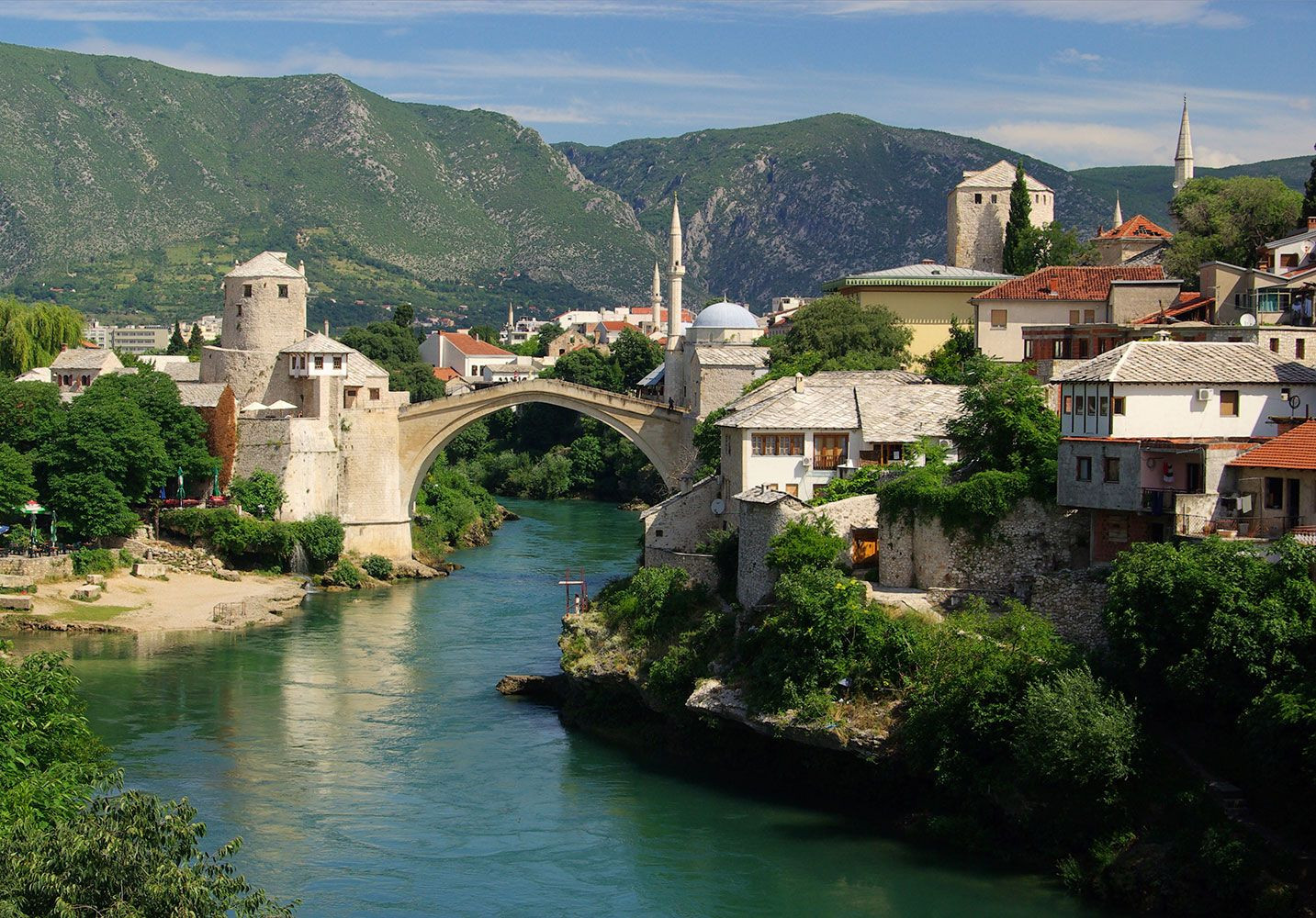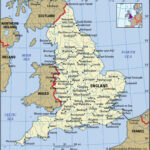Bosnia and Herzegovina, often simply referred to as Bosnia, is a country nestled in Southeastern Europe. More specifically, it’s located in the western Balkan Peninsula, a region historically known for its diverse cultures and at times, turbulent past. Understanding the geographical context is key to grasping Bosnia’s unique identity and complex history.
To pinpoint “Where Is Bosnia” more precisely, it shares borders with several countries. To its north, west, and southwest lies Croatia, a popular tourist destination known for its coastline. Serbia is situated to the east, while Montenegro borders Bosnia to the southeast. This landlocked nation, except for a tiny coastline strip of approximately 20 kilometers (12 miles) near the town of Neum, is geographically positioned between these influential neighbors, a factor that has significantly shaped its history and culture.
Bosnia and Herzegovina itself is composed of two main historical regions: Bosnia in the north and Herzegovina in the south. However, the country’s political landscape is defined by two entities established after the Bosnian War in the 1990s: Republika Srpska and the Federation of Bosnia and Herzegovina. Republika Srpska is primarily located in the northern and eastern parts of the country, while the Federation covers the west and central regions. It’s important to note that these entities are administrative divisions and do not perfectly align with the historical regions of Bosnia and Herzegovina. The capital city, Sarajevo, a city rich in history and culture, is centrally located within the Federation of Bosnia and Herzegovina. Other significant cities include Mostar, famous for its iconic bridge, and Banja Luka, the largest city in Republika Srpska.
Bosnia and Herzegovina’s location at the crossroads of civilizations has profoundly influenced its cultural tapestry. Throughout history, the land has been a meeting point for various empires and cultural spheres. For centuries, the Ottoman Empire held sway, leaving a lasting Islamic influence. Prior to Ottoman rule, and alongside it, Christianity, in both its Orthodox and Catholic forms, took root. This historical confluence is reflected in Bosnia and Herzegovina’s diverse ethnic and religious makeup.
The population is a mosaic of Bosniaks, Serbs, and Croats, with these ethnic groups largely associated with Islam, Orthodox Christianity, and Roman Catholicism respectively. This multi-ethnic character, coupled with its position between Serbia and Croatia, has historically made Bosnia and Herzegovina vulnerable to nationalist aspirations and external influences.
 Rebuilt Stone Arch Bridge in Mostar, Bosnia and Herzegovina, reflecting historical resilience
Rebuilt Stone Arch Bridge in Mostar, Bosnia and Herzegovina, reflecting historical resilience
From the 15th century until the late 19th century, the Ottoman Empire governed the region. Following this, Austria-Hungary took control in 1878. Bosnia and Herzegovina’s location played a pivotal role in the events leading up to World War I, with the assassination of Archduke Franz Ferdinand in Sarajevo in 1914 serving as the spark that ignited the global conflict. After World War I, it became part of the Kingdom of Serbs, Croats, and Slovenes, which later became Yugoslavia. During the breakup of Yugoslavia in the early 1990s, Bosnia and Herzegovina declared independence in 1992.
However, this declaration of independence was met with resistance, leading to the devastating Bosnian War (1992-1995). The conflict was marked by intense fighting, ethnic cleansing, and widespread displacement. International intervention eventually led to the Dayton Accords in 1995, which brought an end to the war and established the current political structure of Bosnia and Herzegovina. Despite the peace agreement, the country remains a complex and, in some ways, fragile state, navigating its multi-ethnic identity and striving for lasting stability.
In conclusion, “where is Bosnia?” is in the heart of the Balkans, a region in Southeastern Europe with a rich and layered history. Its geographical location has made it a cultural crossroads and a significant player in European history. Understanding its location is the first step to appreciating the intricate story of Bosnia and Herzegovina and its place in the world.
[


